It’s a cloudy late-April Saturday and I’m standing before the wrought facade of Rosslyn Chapel just south of Edinburgh. This is my second visit, but I still have difficulty believing it exists. I’ve yet to find a more wondrous and unsettling place.
Perhaps you read my recent Picture This about the green man of Rosslyn Chapel. It’s a good intro to the bizarre stone carvings inside the chapel and a taste of the history behind it. The chapel was built between 1446 and 1486 by Sir William St. Clair, the last St. Clair prince of Orkney. The St. Clairs (later and sometimes otherwise known as the Sinclairs) were a powerful Scottish family of Viking extraction, having arrived to Britain during the conquest of 1066. The St. Clair family was later invited to Scotland where they established their power and prosperity, and they even fought to retain Scottish independence alongside Robert the Bruce at Bannockburn. What possessed Sir William to build Rosslyn Chapel?
In the 15th century, Britain was Roman Catholic and many collegiate chuches like Rosslyn Chapel were built to spread intellectual and spiritual knowledge. The patrons of these churches spared no expense in their design and construction, which turned out to be a good indicator of that person’s or family’s wealth. Judging by Rosslyn Chapel, the St. Clairs were loaded. Interestingly, what exists today is only a third of what Sir William had planned – it’s unknown why it wasn’t finished. And yet, even at its current size, it fights far, far above its weight.
The chapel was closed in the late 16th century due to the reformation and wasn’t reopened until 1862 when the Victorians took interest. The Victorians renovated the chapel, added carvings, made minor structural changes, and reopened the chapel for religious purposes. These days Rosslyn Chapel is no longer Roman Catholic, but a functioning place of worship for the wider Church of Scotland. Today, most people know about Rosslyn Chapel thanks to Dan Brown’s The Da Vinci Code, which uses the chapel as an integral location in the hunt for the holy grail. Brown followed in the footsteps of a more famous 19th-century author: Sir Walter Scott wrote The Lay of the Last Minstrel, which first brought fame to Rosslyn.
On this visit I was sad to see the exterior of the chapel covered in preservation scaffolding and bounded by neon green fences – it was in the same state when I visited in 2006 – and was horrified to hear photography was no longer allowed inside the chapel. I managed to catch the ear of a manager and she kindly allowed me to take some surreptitious photos. The chapel was constructed in the Gothic style of architecture that gives it a foreboding, even menacing air. Gargoyles, spires, statues, and delicately-carved window arches are everywhere on the exterior.
The inside of Rosslyn Chapel is a marvel of stonemasonry. The arched stone ceiling, pillars, and walls have been carved into flora, fauna, and biblical scenes such that there are almost no smooth surfaces. Hundreds of daisies, lilies, roses, and stars cover the choir’s magnificent arched ceiling. Every support beam, pillar, and strut has been carved with floral or geometric embellishments. Fruits, vegetables, and other plants from around the world line the arched windows. Interestingly, there are carvings of maize, aloe vera, and trillium – plants from a new world that hadn’t yet been officially discovered. A story with firm grounding in fact has Sir William’s grandfather, Sir Henry St. Clair, sailing from the Orkney Islands to Nova Scotia and down the coast to Massachusetts more than 100 years before Columbus discovered America.
Green men, those pre-Christian pagan symbols of fertility and rebirth and being at one with nature, peek out from the carvings all over the chapel. More than 100 hide in the stone foliage amidst Biblical moral stories and scenes. It’s a confounding juxtaposition, though the early church did adopt many pagan symbols and practices. Angels peer from the neck and feet of pillars. One holds a casket with a heart, believed to be a symbol for Robert the Bruce. Another angel plays the bagpipes while yet another, Lucifer, is inverted and bound on his way to hell.
Of particular beauty is the Apprentice Pillar, a masterwork of stonemasonry. Vines from the mouths of eight dragons at the base wind their way around the pillar’s eight-foot height. The sophistication of the carvings is mindblowing – can anyone do this today? The carvings themselves could be an allusion to Scandinavian mythology, as the eight dragons of Niflheim are said to lie at the base of Yggdrasil, the world tree.
Around the chapel are 220 positions for statues, but all are empty. It’s said that there is a chamber beneath the chapel where 20 St. Clair knights are buried. Perhaps the statues for these positions lie there as well. When you add in the grail lore and the mystery of the chapel, this hidden chamber becomes extremely interesting. Unfortunately for the curious, the Earl of Rosslyn has forbidden any excavations.
Words do not easily convey the scope of beauty, mystery, and skill on display at Rosslyn Chapel. All the symbols and scenes might sound haphazardly arrayed, but there is certainly loads of symbolism and meaning, though much of it might now be lost. Perhaps the question I posed in the title of this post is irrelevant. Rosslyn Chapel is certainly both. Maybe that’s all the meaning we need.

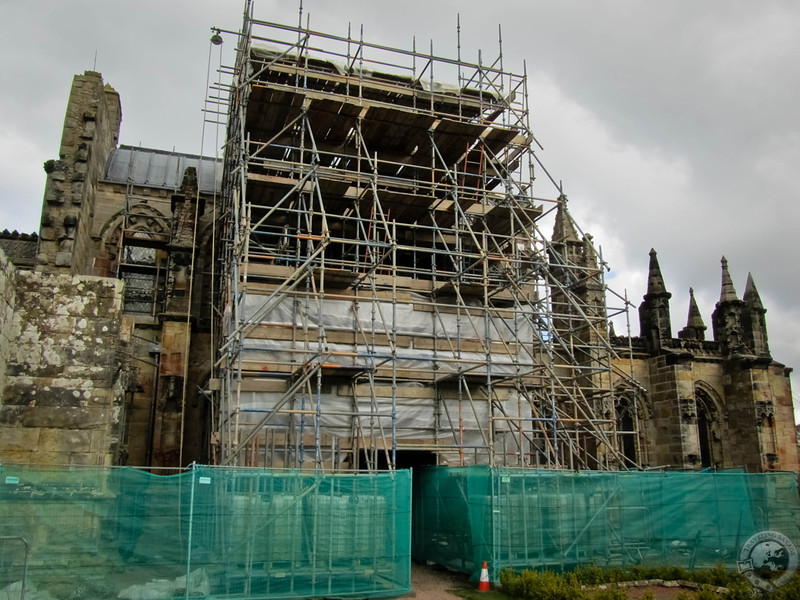
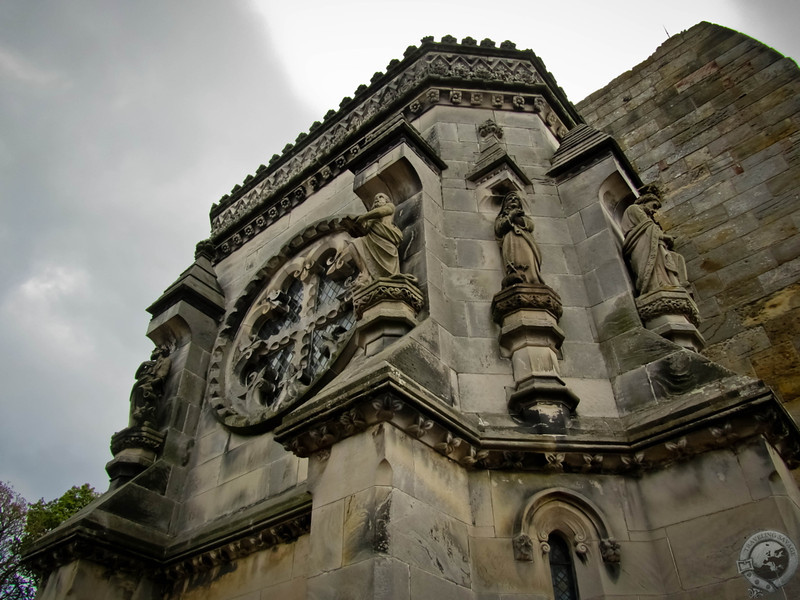
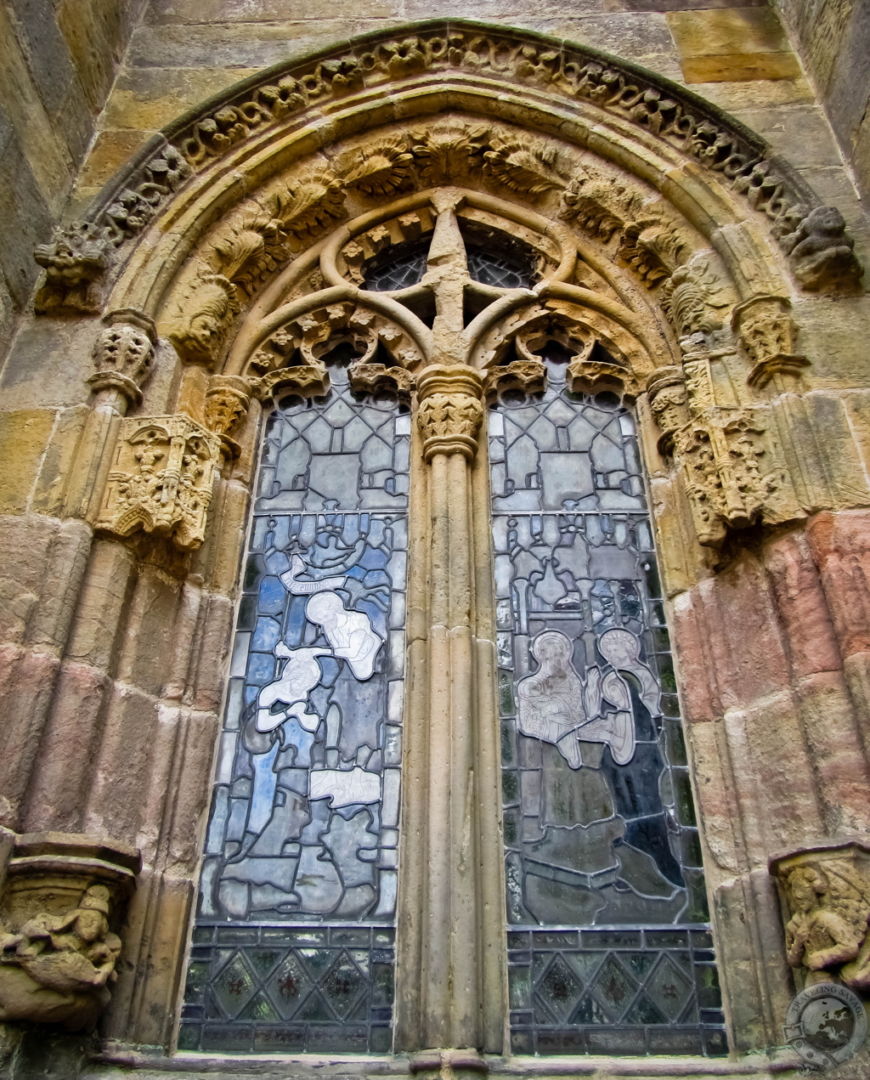
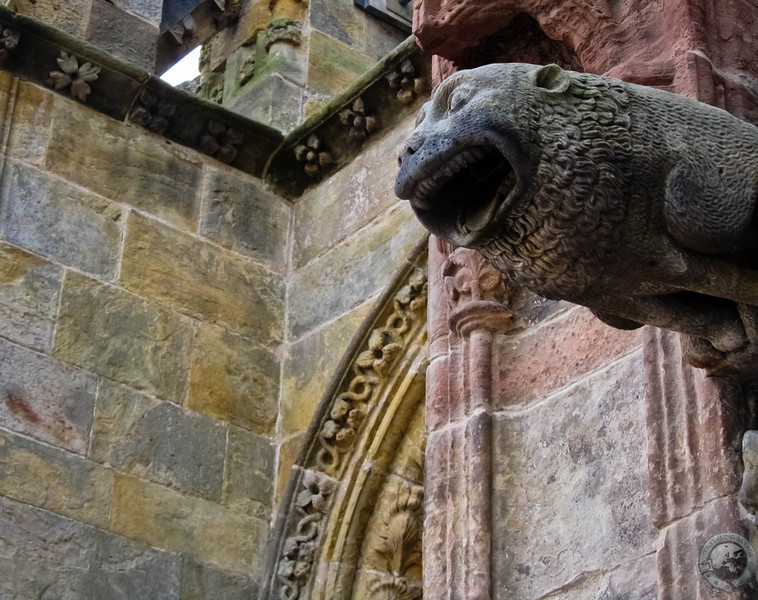
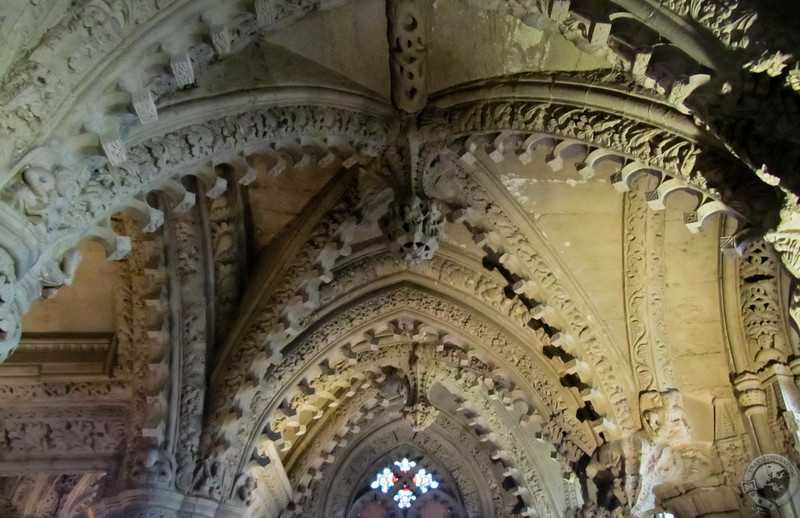
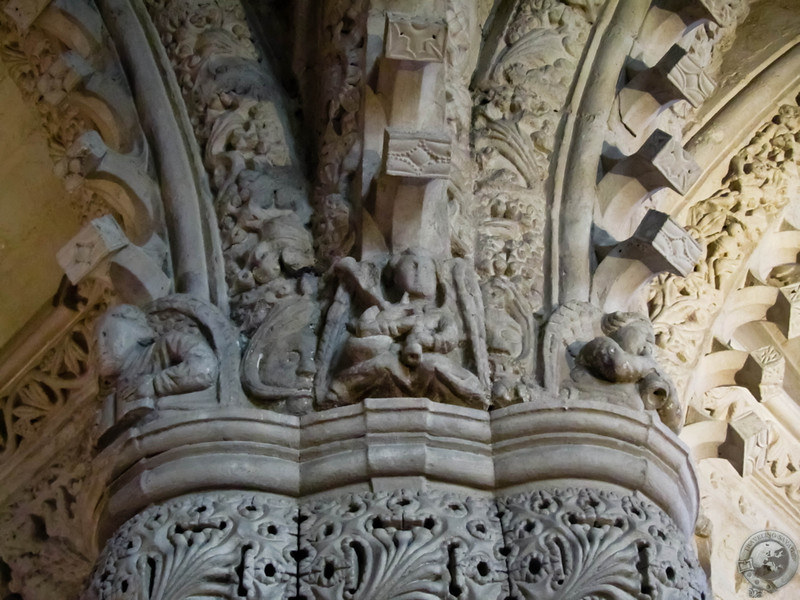
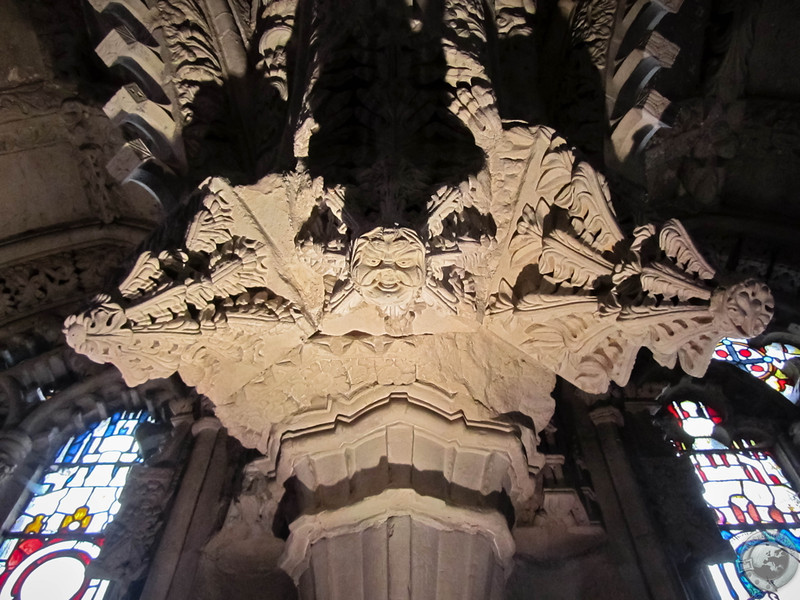
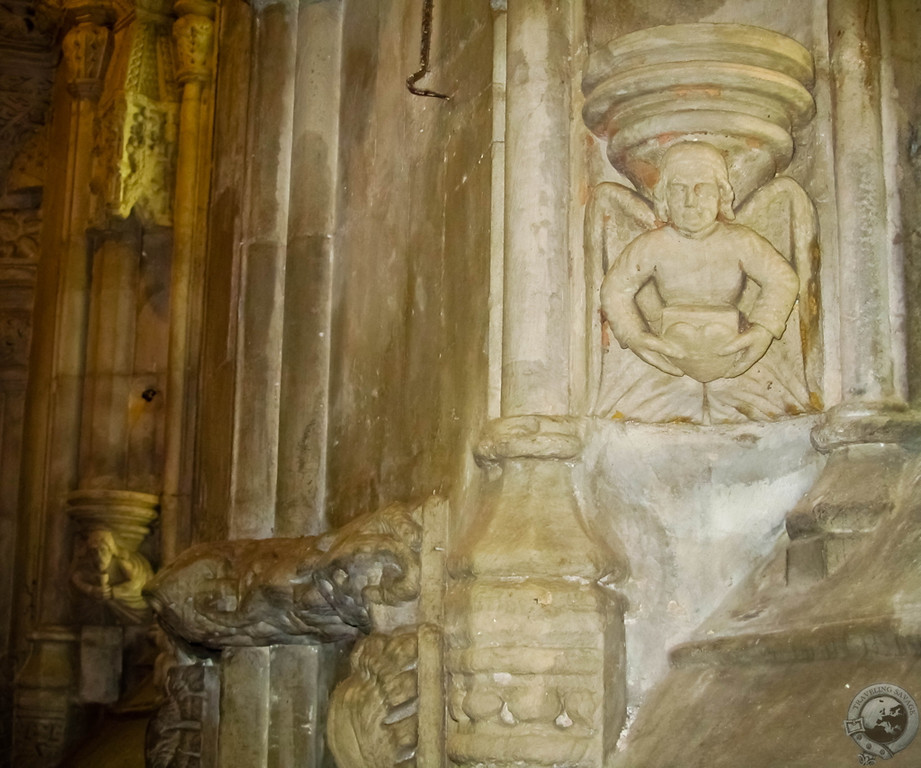
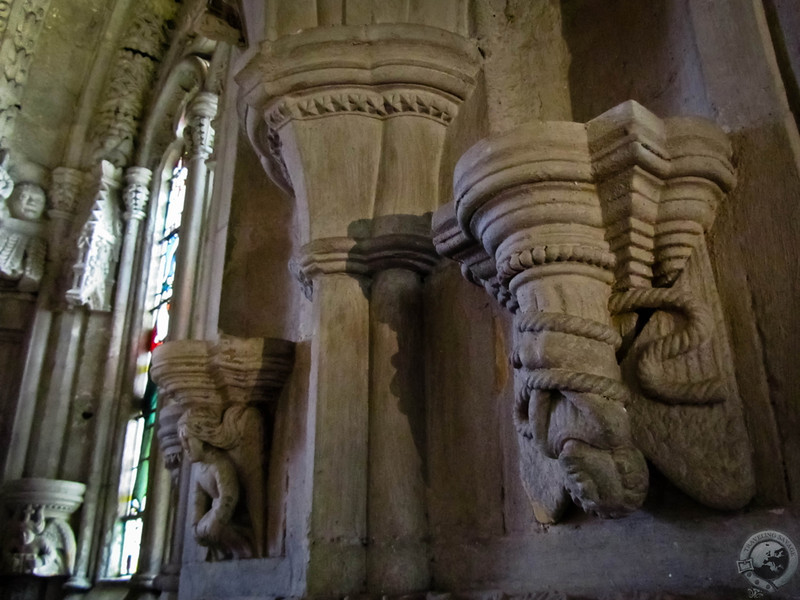
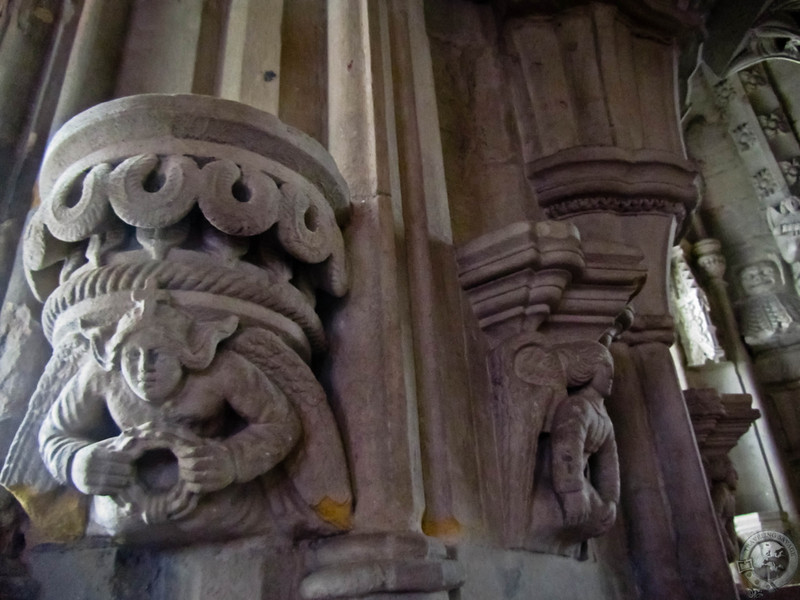
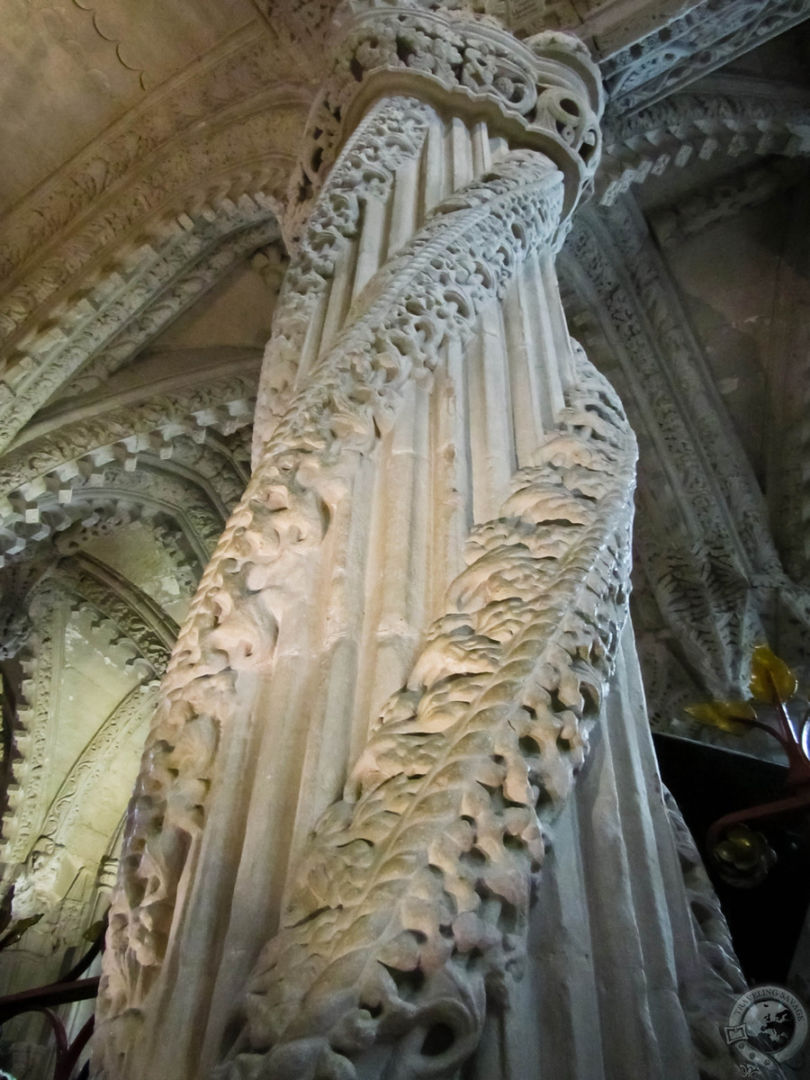
What a beauty! Unfortunately I haven’t visited the Rosslin Chapel when I went to Edinburgh so… Excellent reason (not that I need any) to go back!
Definitely a must-visit site. It’s always nice to have something specific to pull you back 🙂
I’m also always intrigued with most stone churches in the world. Their architecture and timeliness as a long term structure supposing they’re made on a traditional construction technology.
Wonderful job with the photos and the narrative. Great work/vacation/hobby/career. I’m hoping to take off inan rv soon as well. You’re a real inspiration!
Thanks Gerard. Good luck jumping in!
We have been to Edinburgh twice, but haven’t made it here yet (I really want to see it, but it is hard to convince my male traveling companions to be excited about visiting yet another church.) After seeing your photos, I will put it at the top of my priority list for next time…beautiful!
It’s not a church, it’s not a castle – it’s like nothing else in Scotland, but a shrine to mystery.
Wonderful photos and very interesting narrative!
Rosslyn Chapel is amazing… how large is it? It seems large on the images but I cannot really tell. When I first read about it in the Da Vinci Code, I imagined it to be much smaller. Anyhow, it’s wonderful, the carvings, the statues, everything. I wander why the St. Clairs stopped the construction… maybe they ran out of funds?
Rosslyn Chapel is not very big – about the size of a small church. Running out of funds is the most likely reason for aborting further plans, but no one really knows at this point.
Were you thrilled when Marty and Rick arrived on the trail of the Knights Templar and filmed at the Chapel for the program about The Curse of Oak Island? or was it a bit daunting given the popularity of the program all across the world. It is a shame that photography is no longer allowed as I would love to take photographic evidence of my trip when we eventually get out of lockdown. I am particularly interested in the carvings in relation to an old saying that is associated with the Chapel “twixt the oak and the elm tree you will find the millions buried free” This could refer to treasure, of course, but could also have a much deeper meaning than mere wealth in terms of gold coins.
I prefer to think of it in terms of souls of men and women buried as “free people” not enslaved under cruel leaders anymore. I was also fascinated by the story of the large carved stone found, near the wall of the graveyard, when this wall was having to be relaid due to its possible imminent collapse. Not found any pictures of this anywhere and would love to see the carvings.